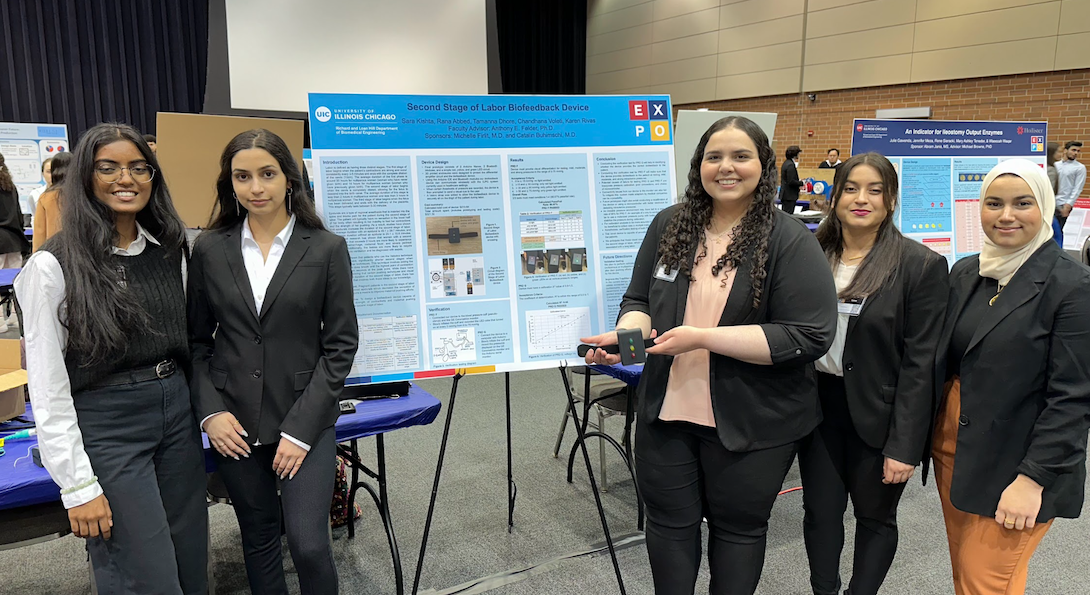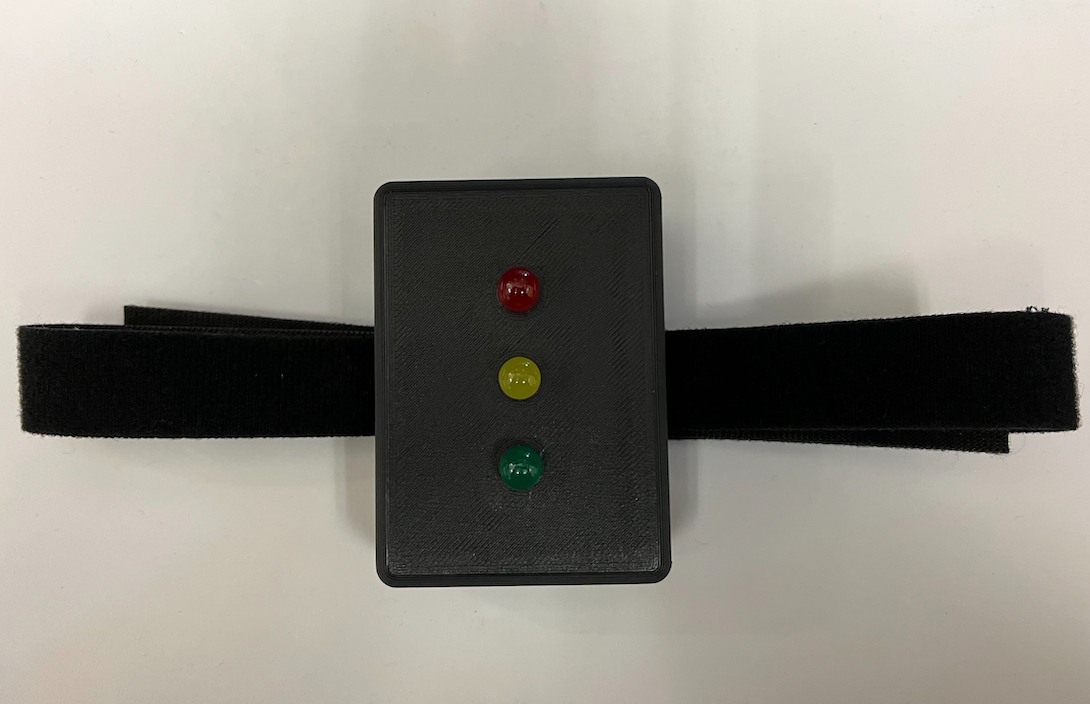Seniors design biofeedback device to improve maternal labor efforts

block 1 Heading link

The senior design course introduced seniors in the Richard and Loan Hill Department of Biomedical Engineering to new lab procedures and existing technology they might have been unfamiliar with prior. After the two semesters it took to complete their projects, they showcased their research, knowledge, and creativity at the 2023 UIC Engineering Design Expo in April.
Two teams in the BME department stood out from the competition as they took home best-in-category awards from the judges, who represented a variety of alumni, professionals from the Chicago region, and faculty from the College of Engineering.
One of those winning teams included seniors Rana Abbed, Tamanna Dhore, Sara Kishta, Karen Rivas, and Chandhana Voleti who received the Clinical Medical Device award for their project “Second Stage of Labor Biofeedback Device.”
“Research in women’s health is currently very limited and we hope to open new doors in the field with our device,” Rivas said.
The team created a compact biofeedback device that can visualize the strength of contractions and maternal pushing efforts during the second stage of labor. In doing so, the device will help reduce the duration of the second stage of labor by informing the patient about how effective their pushing efforts are for delivering the infant.
“Our device is meant to prioritize the patient to ensure that delivery goes as smoothly as possible,” Abbed said.
The second stage of labor involves the delivery of an infant and typically lasts two to three hours. However, when it is prolonged, it can lead to major complications such as hematoma and infection. The group also hopes to reduce instrument-assisted delivery and Caesarean sections for patients.
Effective intrauterine pressure is needed for delivery of an infant. While there are many commercially available devices that measure the strength and duration of contractions, they do not provide visual biofeedback for the patient to shorten the duration of labor.
The biofeedback device the students created reads the pressure signal and transmits it to a separate microcontroller that is attached to the patient to provide visual biofeedback for resting, mild, moderate, and strong intrauterine pressures. Verification testing has confirmed the device to be compatible and calibrated with currently available devices.